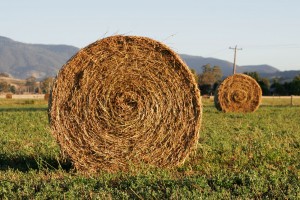OPINION
Water Wasted On Livestock During California Drought

A version of this article, written by James McWilliams, appeared in The New York Times about a year ago. Given the recent media emphasis on California’s drought, it seemed an opportune time for The Daily Pitchfork to run a reminder that animal agriculture is the state’s largest consumer of ag-based water. It also serves as a precursor to an upcoming piece that we’ll be running on the failure of foodie writers to address the role of meat and dairy in the state’s severe drought. -jm
California is experiencing its worst drought on record. Just three and a half years ago, Folsom Lake, a major reservoir outside Sacramento, was at 83 percent capacity. Today it’s down past 30 percent. Gov. Jerry Brown has declared a state of emergency. President Obama has pledged $183 million in emergency funding. The situation is, by any assessment, dire.
With California producing nearly half of the fruit and vegetables grown in the United States, attention has naturally focused on the water required to grow popular foods such as walnuts, broccoli, lettuce, tomatoes, strawberries, almonds and grapes. These crops are the ones that a recent report in the magazine Mother Jones highlighted as being water intensive. Who knew, for example, that it took 5.4 gallons to produce a head of broccoli, or 3.3 gallons to grow a single tomato? This information about the water footprint of food products — that is, the amount of water required to produce them — is important to understand, especially for a state that dedicates about 80 percent of its water to agriculture.
But for those truly interested in lowering their water footprint, those numbers pale next to the water required to sustain livestock. A 2012 study in the journal Ecosystems by Mesfin M. Mekonnen and Arjen Y. Hoekstra, both at the University of Twente in the Netherlands, tells an important story. Beef turns out to have an overall water footprint of roughly four million gallons per ton produced. By contrast, the water footprint for “sugar crops” like sugar beets is about 52,000 gallons per ton; for vegetables it’s 85,000 gallons per ton; and for starchy roots it’s about 102,200 gallons per ton.
Factor in the kind of water required to produce these foods, and the water situation looks even worse for the future of animal agriculture in drought-stricken regions that use what’s known as “blue water,” or water stored in lakes, rivers and aquifers, which California and much of the West depend on.
Vegetables use about 11,300 gallons per ton of blue water; starchy roots, about 4,200 gallons per ton; and fruit, about 38,800 gallons per ton. By comparison, pork consumes 121,000 gallons of blue water per ton of meat produced; beef, about 145,000 gallons per ton; and butter, some 122,800 gallons per ton. There’s a reason mentalhealthdrugs other than the drought that Folsom Lake has dropped as precipitously as it has. Don’t look at kale as the culprit–or almonds, as Mother Jones, which dedicated six articles to the topic in 2014, has done. Instead, a single plant is leading California’s water consumption.
Unfortunately, it’s a plant that humans don’t eat: alfalfa. Grown on over a million acres in California, alfalfa sucks up more water than any other crop in the state. And it has one primary destination: cattle. Increasingly popular grass-fed beef operations typically rely on alfalfa as a supplement to pasture grass. Alfalfa hay is also an integral feed source for factory-farmed cows, especially those involved in dairy production. You milk accounts for more water than you’d imagine.
If Californians were eating all the beef they produced, one might write off alfalfa’s water footprint as the cost of nurturing local food systems. But that’s not what’s happening. Californians are sending their alfalfa, and thus their water, to Asia. The reason is simple. It’s more profitable to ship alfalfa hay from California to China than from the Imperial Valley to the Central Valley. Alfalfa growers are now exporting some 100 billion gallons of water a year from this drought-ridden region to the other side of the world in the form of alfalfa. All as more Asians are embracing the American-style, meat-hungry diet.
Further intensifying this ecological injustice are incidents such as the Rancho Feeding Corporation’s recent recall of 8.7 million pounds of beef because the meat lacked a full federal inspection. That equals 631.6 million gallons of water wasted by an industry with a far more complex and resource-intensive supply chain than the systems that move strawberries from farm to fork.
This comparison isn’t to suggest that produce isn’t occasionally recalled, but the Rancho incident reminds us that plants aren’t slaughtered, a process that demands 132 gallons of water per animal carcass, contributing even more to livestock’s expanding water footprint.
It’s understandable for concerned consumers to feel helpless in the face of these complex industrial and global realities. But in the case of agriculture and drought, there’s a clear and accessible action most citizens can take: reducing or, ideally, eliminating the consumption of animal products. Changing one’s diet to replace 50 percent of animal products with edible plants like legumes, nuts and tubers results in a 30 percent reduction in an individual’s food-related water footprint. Going vegetarian, a better option in many respects, reduces that water footprint by almost 60 percent.
It’s seductive to think that we can continue along our carnivorous route, even in this era of climate instability. The environmental impact of cattle in California, however, reminds us how mistaken this idea is coming to seem.

I LOVE the Daily Pitchfork. Thank you for a great article.
Quote: “Going vegetarian, a better option in many respects, reduces that water footprint by almost 60 percent.”
Going vegan would reduce it even more.
Has there been any measured increase in self-identified vegetarians or vegans in California in response to the drought and awareness campaigns?